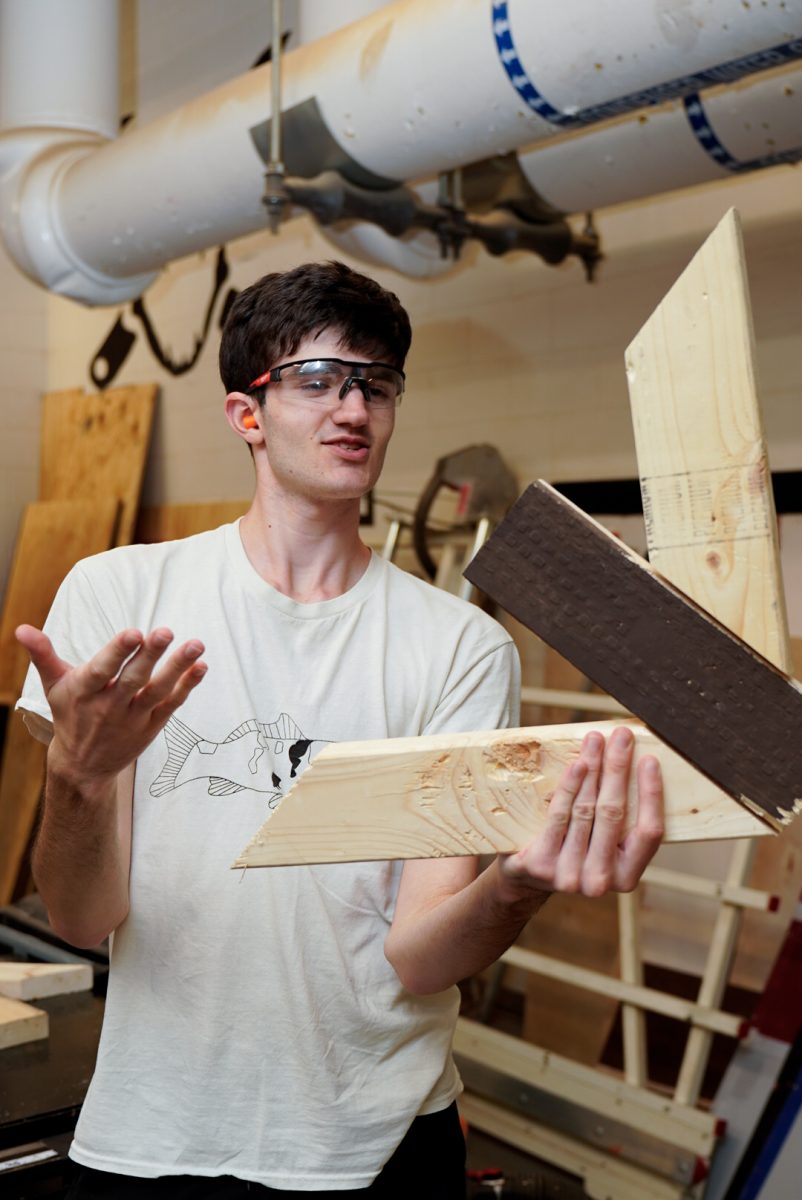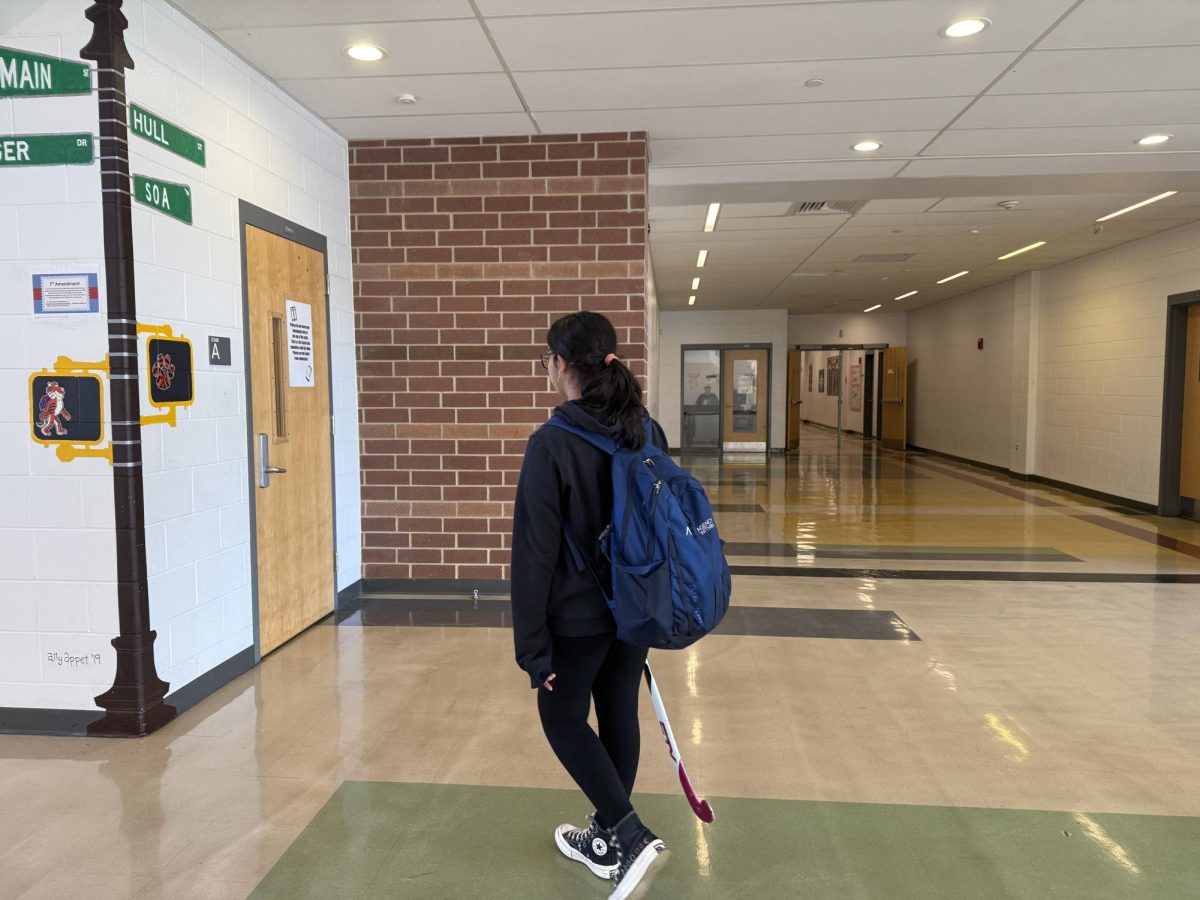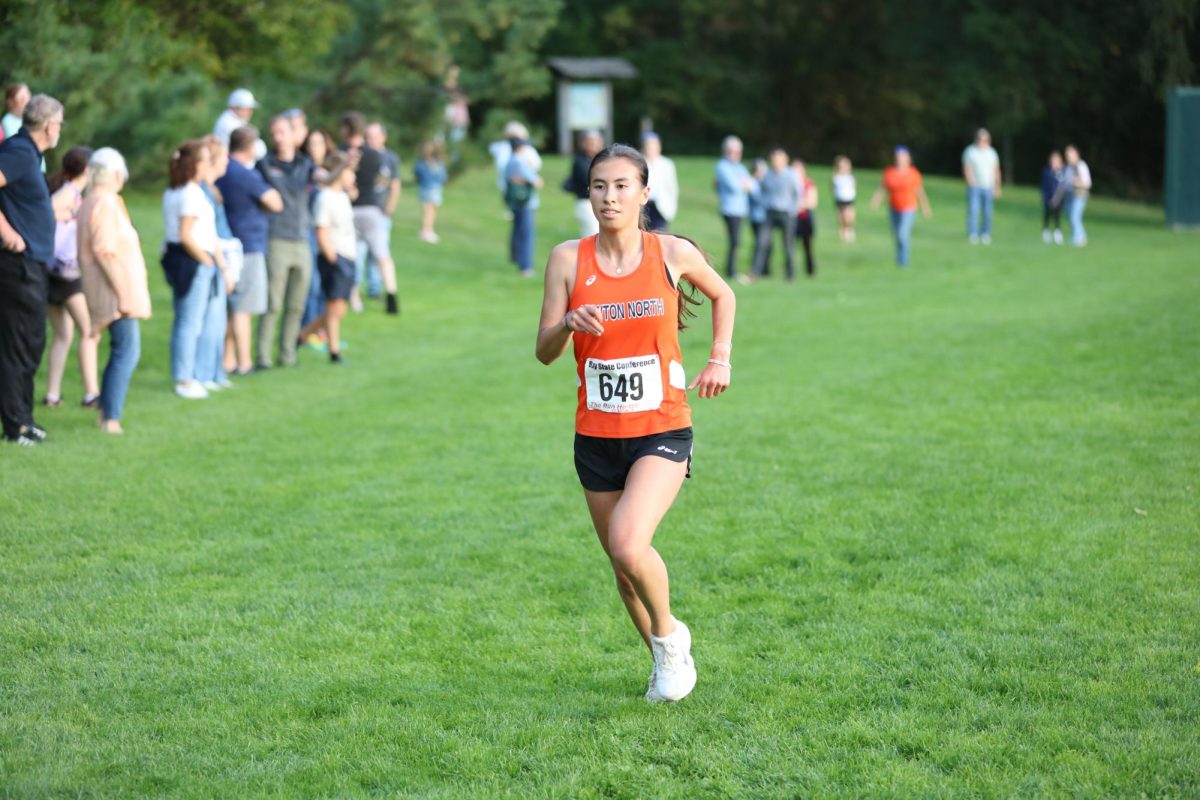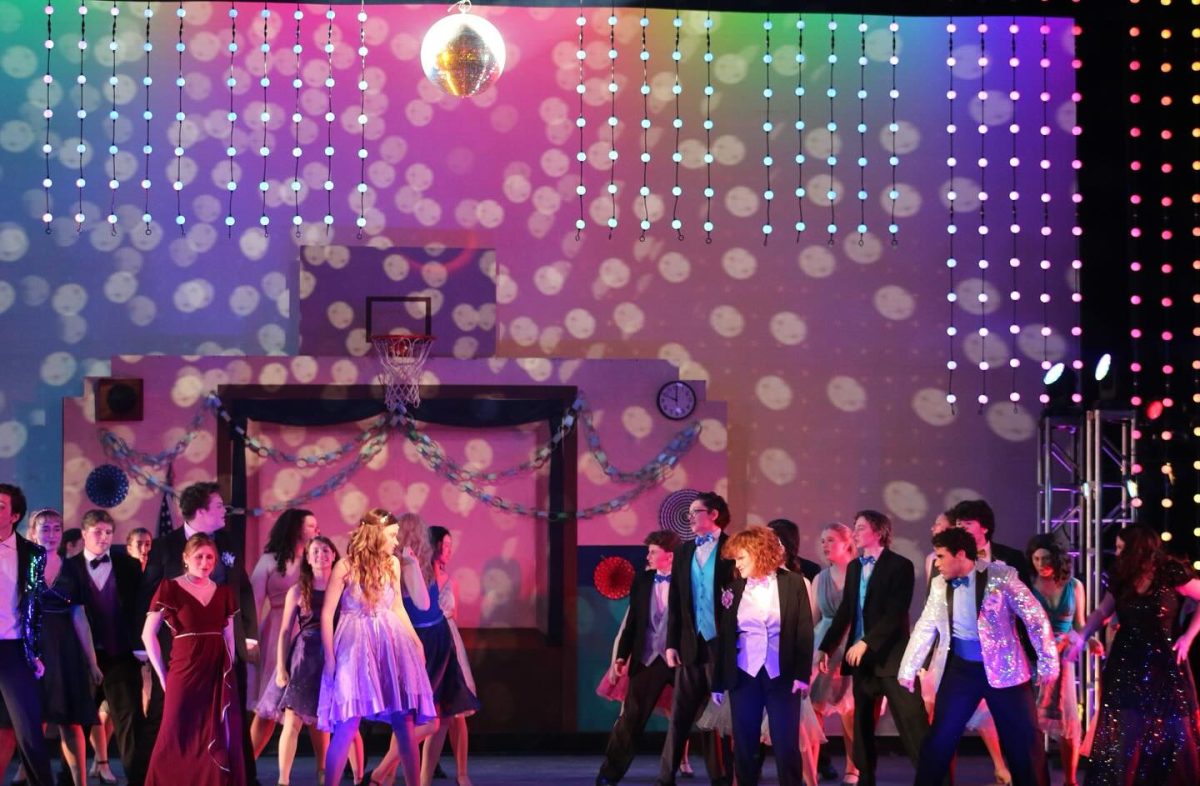by Julia Oran
Look! Up in the sky! It’s a bird! It’s a plane! It’s sophomore Meghan Lyons-Dunckel.
Lyons-Dunckel has been flying for about six years using the trapeze, an aerial apparatus often used in circus performances.
She explained that flying works by standing on a platform and holding onto the trapeze, which is a bar connected to two cables on the end. When an instructor tells the trapeze artist to go, she steps off the platform. At that point, she can swing or do a trick.
Lyons-Dunckel said she became interested in flying when she saw that Beaver Summer Programs offered a circus program, and she thought “it would be awesome to try out.” Lyons-Dunckel went to the camp for four years until the program was cancelled.
Junior Hannah Searles also flew with Lyons-Dunckel at camp. Searles said, “It feels really cool to do it and to feel like you’re flying.”
Now, Lyons-Dunckel goes to Jordan’s Furniture Beantown in Reading, where there is a trapeze program. Professional trapeze instructors from Trapeze School New York teach students mostly basic skills but can teach more experienced students advanced techniques, too, according to Lyons-Dunckel.
An example of a basic skill is a knee hang, which is when the trapeze artist hooks her knees over the trapeze and lets go with her hands, so she is hanging from the bar. More advanced techniques result in tricks that one might see at a circus.
Lyons-Dunckel said she considers herself at an intermediate level because, “I’ve been doing it for a while, so I wouldn’t consider myself a beginner, but I’m not advanced, because there are some really difficult tricks that I probably will never be able to do.”
Beginners wear harnesses that are connected to safety lines, but as students become more advanced, they do not have to wear a harness anymore. Lyons-Dunckel said she always flies with a harness because she has not yet mastered how to fly without it. Underneath the trapeze is a net, which students learn how to safely fall into by being slowly lowered by the lines attached to the harness.
Lyons-Dunckel said she has learned how to fly by attending classes, and each time she “works on a new trick or just getting better at one.” Lyons-Dunckel usually goes with her friends from South, but said her dad comes sometimes, too. She does not go to classes on a regular basis, though, because it is difficult to find time.
She said, “I think my favorite part is learning something new” because “it’s always really exciting.”
However, Lyons-Dunckel admitted that when she does new tricks, “I do get scared sometimes. When I’m waiting for someone to tell me to go, I’m standing on the edge of a platform, and I can’t stand the anticipation.”
She said, “My proudest moment would be when I caught a whip,” because “I had been working on it for a really long time and when I finally caught it it was amazing.”
A whip is when the trapeze artist holds on to the trapeze bar, and while swinging, pulls her legs through the space in between her arms and the bar, like a half skin-the-cat. When the time is right, the trapeze artist lets go of the bar and grabs onto someone swinging on another trapeze. The successful transfer of the trapeze artist from her bar to the other person is called catching a trick.
Lyons-Dunckel said that she also enjoys doing layouts, which is when the trapeze artist holds onto the bar and while swinging, lets go and flips backward, keeping her body completely straight.
She said that one of her goals is, “to learn new things and have a good time.”
Lyons-Dunckel added, “I hope to fly after high school and later.”
“The awesome thing about a trapeze is that pretty much anyone can do it,” she said.









































